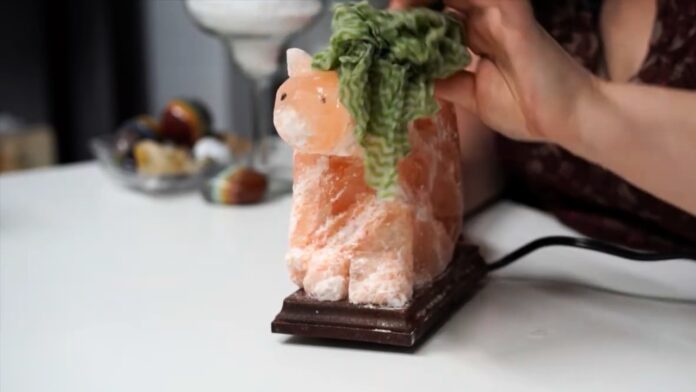If your salt lamp is wet, you may be wondering why. There are a few reasons why this could happen, and each one has a different solution. In this blog post, we’ll explore some of the reasons Why Is My Salt Lamp Wet? and what you can do to fix it.
By understanding the causes of a wet salt lamp, you can take steps to prevent it from happening again in the future. So, let’s get started!
So, Why Is My Salt Lamp Wet:
There can be a few factors that can cause the salt lamps to wet.
1. It’s Been Raining Or The Humidity Is High.
If it’s been raining or the humidity is high, your salt lamp may sweat. This is because salt absorbs moisture from the air.
2. You’ve Been Using It For A Long Time.
If you’ve been using your salt lamp for a long time, the salt may start to dissolve in the water. This can cause the water to become murky and cause your salt lamp to sweat.
3. You Live In A Warm Climate.
If you live in a warm climate, the heat may cause your salt lamp to sweat.
4. You Have A Salt Lamp That’s Not Properly Ventilated.
If your salt lamp is not properly ventilated, the heat can build up and cause the salt to sweat.
How To Fix Salt Lamp From Sweating:
If your salt lamp is sweating, there are a few things you can do to fix it.
1. Move It To A Cooler Location.
If your salt lamp is in a warm room, try moving it to a cooler location. This will help to prevent the heat from building up and causing the salt to sweat.
2. Ensure It’s Properly Ventilated.
Make sure your salt lamp is in a well-ventilated area. This will help to keep the heat from building up and causing the salt to sweat.
3. Place It On A Dry Surface.
If your salt lamp is on a wet surface, try placing it on a dry surface. This will help to prevent the salt from sweating and making the surface wet.
4. Use A Fan.
If you have a fan, you can use it to help keep the air moving around your salt lamp. This will help to prevent the heat from building up and causing the salt to sweat.
5. Turn Off The Heat.
If you have a salt lamp that’s in a warm room, try turning off the heat. This will help to prevent the heat from building up and causing the salt to sweat.
By following these tips, you can help to prevent your salt lamp from sweating. If your salt lamp does sweat, you can take steps to fix it.
By understanding the causes of a wet salt lamp, you can take steps to prevent it from happening again in the future.
Conclusion:
Salt lamps are beautiful and unique pieces of home decor that can also serve as a source of natural light. We hope this article has answered your question, “why is my salt lamp wet?” If not, please feel free to contact us for more information.
And remember, if you’re a student using a salt lamp in your dorm room, make sure to keep it away from water sources and use a light bulb with low wattage to prevent the risk of fire. Thanks for reading!
FAQs:
1. Which method is used to dry out a salt lamp?
Answer: There are a few ways to dry out a salt lamp. One way is to let the Lamp Userair dry the salt lamp for 24-48 hours in a well-ventilated area. Another way is to use a Salt Lamp Drying Rack, which can be found online.
2. Can I use a wet salt lamp?
Answer: Users of salt lamps should be aware that the lamp can become wet if it is used in a humid environment. If the salt lamp becomes wet, it can corrode and release harmful particles into the air. For this reason, it is not recommended to use a salt lamp.
3. Do salt lamps absorb moisture?
Answer: This ability to fight humidity makes them popular among students and lamp users is generally humid climates. If you live in a more temperate climate, your salt lamp will most likely not absorb much moisture unless it’s placed in a very damp room.
4. Why is my salt lamp melting?
Answer: There are a few possible reasons why your salt lamp might be melting. If you’re using it in a humid environment, the moisture in the air can cause it to soften and start to melt.
5. Why is my salt rock leaking?
Answer: It’s possible that the upper and lower parts of the lamp have become separated. This can happen if the lamp is dropped or bumped. Or the metal heat plate on the bottom of the lamp has come into contact with water causing it to rust and leak.




